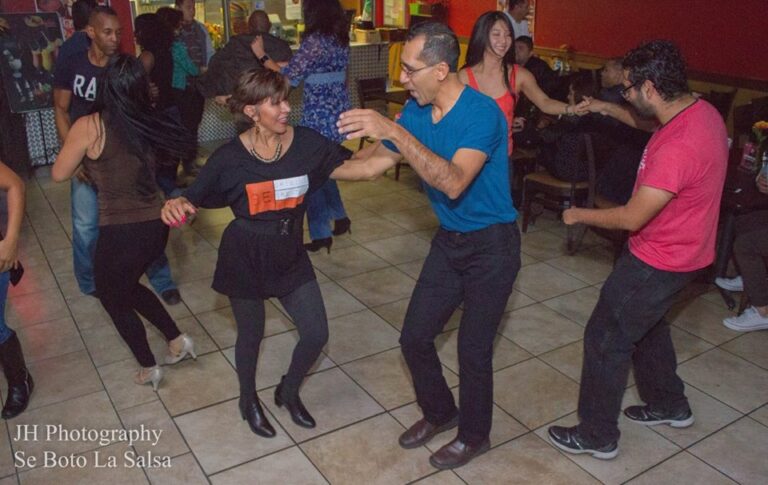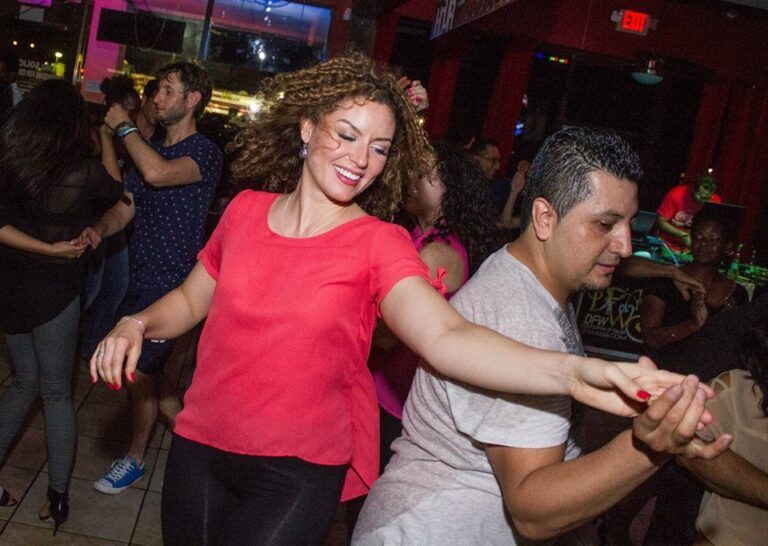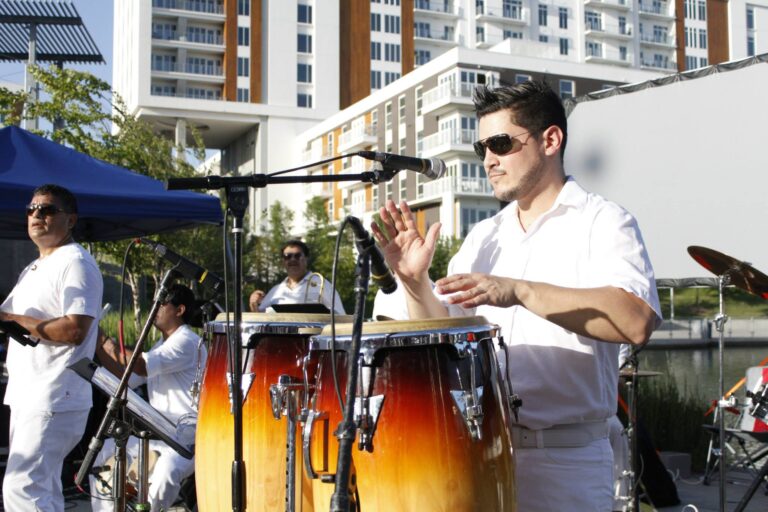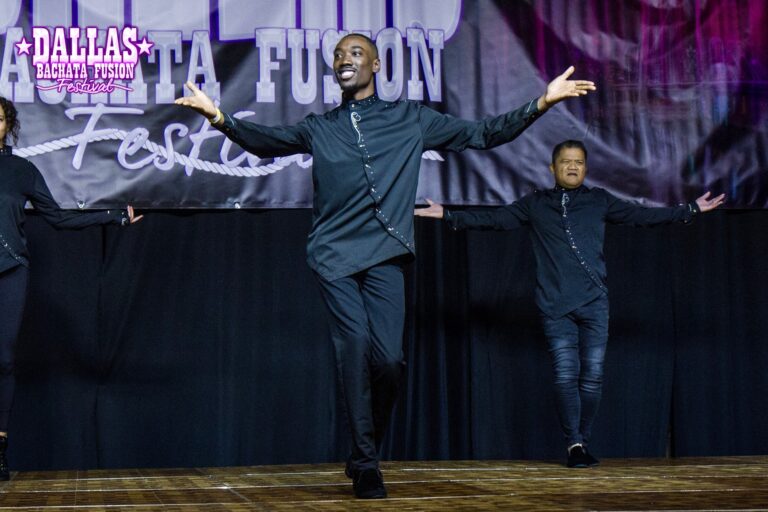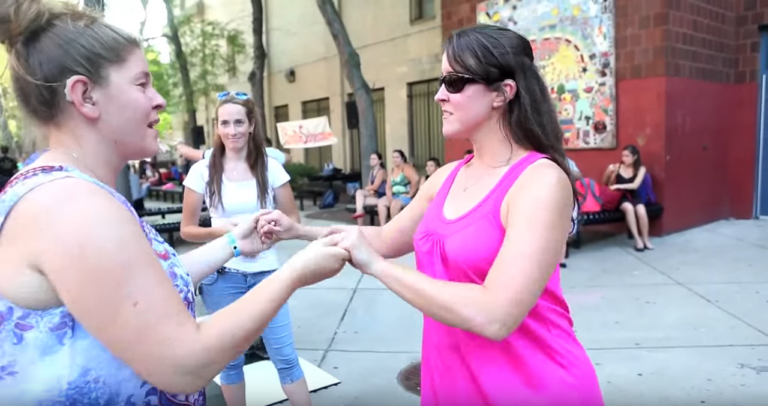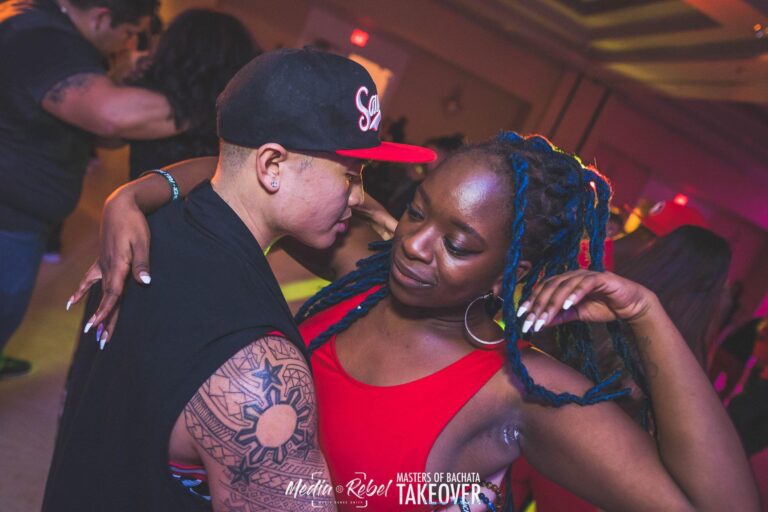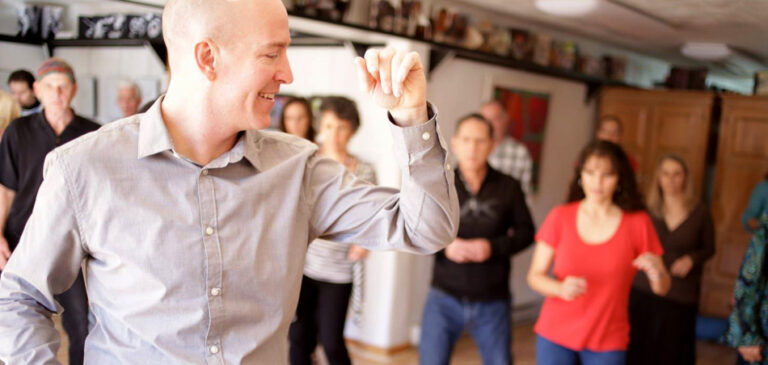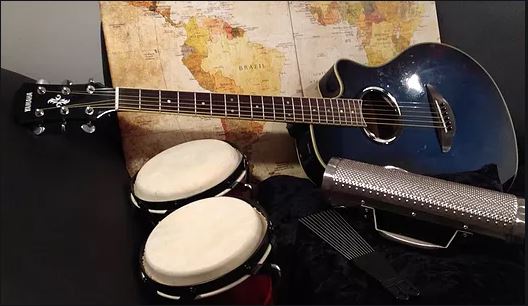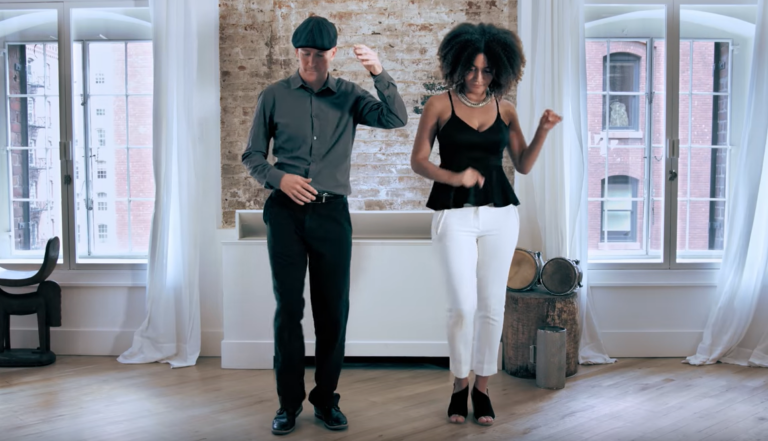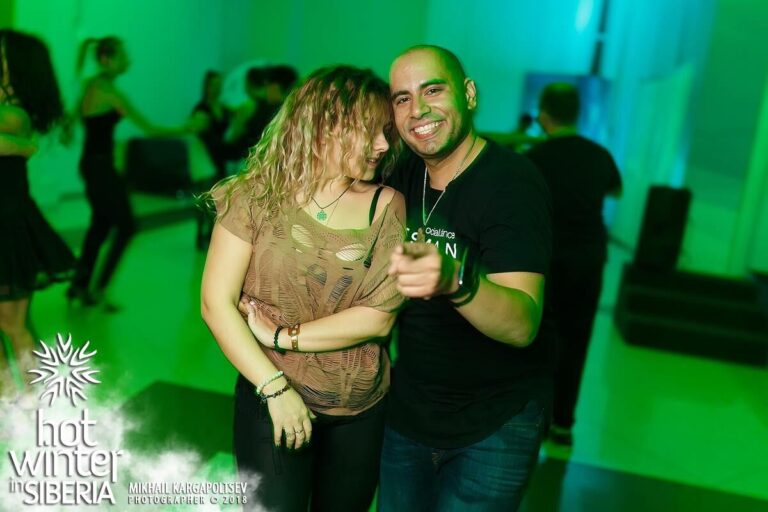If you’re reading this site, then it goes without saying that Latin dances (salsa, bachata, kizomba(yes, we know its not a Latin dance)) can be flirtatious, sexy, and sensual. Whenever we go out dancing it’s fun to feel that spark of attraction between you and your partner, even if it’s something that doesn’t go anywhere beyond the dance floor.
We spend hours of our free time in the dance studio, working on new moves, improving our musicality, and practicing our styling so that we can become better dance partners who people will want to dance with on the social dance floor.
However, sometimes we get so caught up in becoming better dancers that we ignore other aspects about ourselves that are equally important in being a good dance partner. Dance is ultimately about building a connection with your partner and sharing a fun experience. It’s not about who can do the most turn patterns or who can do the most spins.
So here are five things that you can work on that will make you a better dance partner, even if you don’t improve your dancing. This is coming from a guy’s perspective, but many of these are applicable for women as well.
1) Hygiene
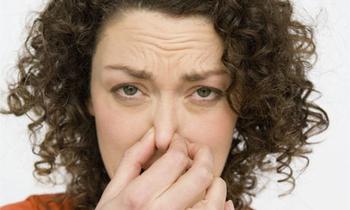 Let’s start with the most basic one. Hygiene. It seems like it would be common sense for a group of adults that if you go out to a social event you should take basic care of your hygiene, but I can tell you that every time I go out to a salsa club, there is someone with poor hygiene. Every time.
Let’s start with the most basic one. Hygiene. It seems like it would be common sense for a group of adults that if you go out to a social event you should take basic care of your hygiene, but I can tell you that every time I go out to a salsa club, there is someone with poor hygiene. Every time.
This is mainly a problem I notice with guys, but I’ve danced with a few girls who have bad breath, BO, or other hygiene issues as well. No matter how good of a dancer you are, if your hygiene is poor people are not going to want to dance with you and you will end up on a lot of blacklists. What’s worse, most people will be too embarrassed to tell you what’s wrong with you.
If hygiene is something you don’t think too much about, here is a helpful checklist to consider:
- Take a shower before going out, especially if you have strong body odor (ask a good friend)
- Use deodorant to keep your BO under control while dancing. Anti-perspirant deodorant also has the benefit of making you sweat less
- If you sweat a lot, make sure to bring extra shirts and towel off between dances. A little bit of sweat can be hot and sexy, but if you are drenched and dripping, it’s just gross
- Brush your teeth before going out. Bring some gum or mints you can chew on between dances to help freshen up your breath (but don’t chew gum when you’re dancing, it can be obnoxious)
- Trim your fingernails so that they don’t look like claws
- If you have a lot of hair in awkward places (nose hairs, armpit hairs) trim them down to a civilized level
These things may be basic, but they will have a dramatic impact on how people treat you, not just on the dance floor but in your every day life as well.
2) Appearance
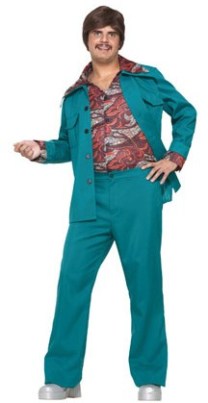 This is another one of those things that guys often ignore that women are usually much better at. Guys, if you’ve ever lived with a woman you know that she spends a lot of time and effort whenever she goes out. Women often spend 1-2 hours getting ready before they go out on their hair, makeup, clothes, etc.
This is another one of those things that guys often ignore that women are usually much better at. Guys, if you’ve ever lived with a woman you know that she spends a lot of time and effort whenever she goes out. Women often spend 1-2 hours getting ready before they go out on their hair, makeup, clothes, etc.
Now as a guy you can probably get away with doing a lot less, but at least make it look like you put in a little bit of effort into your appearance, and that you care about how you look. Because other people do care about how you look, and will treat you differently because of that.
It may seem shallow, but people judge you based on your looks, especially people who’ve never met you before. When you meet someone new, they are going to be judging you based on how you’re dressed, how you’re groomed, etc. And women love dancing with a well-dressed guy.
The experience of dancing with a guy who’s well-dressed and well-groomed is worlds apart from dancing with someone who is dressed sloppily, even if their dancing ability is exactly the same.
Besides making your partner feel good, dressing well also increases your own level of confidence, which makes you more enjoyable to dance with. If you go out to a salsa congress, you will notice that it is often the professional dancers who are the best dressed ones there. They understand that being a good dance partner is not just about dancing, but it’s important to look the part as well.
So take some time and take care of your appearance. You don’t need to show up to a salsa club in a full suit and tie (you shouldn’t), but invest in some nice dress shoes, get some nice clothes (that fit!), and maybe invest in a cool haircut. It will make you look better, feel better, and make it more enjoyable for your partner to dance with you.
3) Physical Fitness
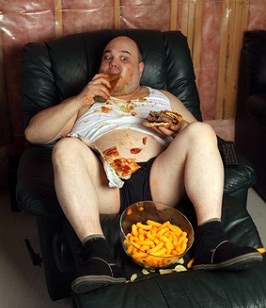
This is another one that is closely related to appearance, but is important enough to warrant its own section. Besides just external things like clothing and grooming, if you really want to impress your partner you should take care of your physical health as well. Appearance isn’t everything, but the truth is that men and women love dancing with people who are in great physical shape over people who are overweight.
This doesn’t mean that you have to be a model or a body builder to get a dance, but take some time to go to the gym and be mindful of your diet. Dance itself is a great physical activity, so use it to get into better shape.
Getting into better shape will make you feel better and more confident in yourself, which will also make you a more attractive dancer. Plus, your partner will want to get closer to you during a sexy bachata if you have toned muscles instead of rolls of fat.
4) Mood
Dancing is a form of communication, it just doesn’t (usually) involve words. So think of dance like having a conversation with someone. If someone is tired, or stressed out, or bored, you’re probably not going to have a very good conversation with them. The same is true for dance.
So the next time you go out dancing, make sure that you’re in a positive mood and ready to engage in a good conversation with someone. You don’t need to be bouncing off the walls, but make sure that you’re not going to ruin your dances by bringing negative energy onto the dance floor. This can be hard sometimes if you’ve had a rough day at work or are dealing with stress in your life. Here are some things that can help improve your mood before going out:
- Go jogging. A 15-20 minute run will get your endorphins flowing and help clear your mind
- Take a nap. Getting some sleep can help reset your mind and clear out any stress before going out dancing
- Listen to music. Blasting your favorite playlist can help turn your mood around into a positive one
- Watch comedy. They say that laughter is the best medicine, and watching some standup comedy before you go out can be a good way to lighten your mood and get you ready to dance
- Eat chocolate. Chocolate is one of those foods that releases endorphins, feel good chemicals that can help cheer you up. Eat chocolate in moderation (remember your health!) but a little bit can serve as a good picker upper. Another, lower calorie option, is to drink some green tea, which also boosts endorphins
- Alcohol. Use this one in moderation, but a drink or two can help you loosen up and relax before a night of dancing. Just don’t become dependent on alcohol for a good mood, and don’t drink so much that it affects your dancing ability
Your mood is crucial for having fun when you go out dancing, and for establishing a positive connection with your dance partner. No matter how good you are at dancing, it won’t be fun for you or your partner if you’re in a foul mood. Be aware of your emotions, and be sure to get them handled before you step onto the dance floor.
5) Confidence
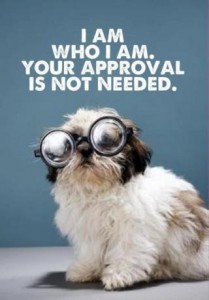 Confidence is one of the things that women find most attractive in men. Even for women, a lack of confidence can make a dance less fun that it otherwise would be. Building confidence is big topic that perhaps goes beyond the scope of this article, but here are a few suggestions.
Confidence is one of the things that women find most attractive in men. Even for women, a lack of confidence can make a dance less fun that it otherwise would be. Building confidence is big topic that perhaps goes beyond the scope of this article, but here are a few suggestions.
Competence – If you don’t know how to do something, then you probably aren’t going to be very confident about it. On the flip side, competence build confidence– the better you get at something the more confident you will feel about it. You probably feel pretty confident about walking because you’ve been doing it for so long. Dance is the same way. The better you get at dancing, the more confident you will feel about dancing.
Even if you’re not perfect, just the fact that you’ve taken the time to practice something will increase your confidence.
Insecurities – Another way to look at confidence is as a lack of insecurities. If you are insecure about something, then you aren’t confident. Consequently, one way to become confident is to deal with your insecurities.
Maybe you’ve had negative experiences in the past with men or women, maybe you’ve been hurt, maybe you don’t feel like you’re worthy enough to be dancing with your current partner. We’ve all been there. Whatever those issues may be, you want to deal with them, or they will creep up while you’re dancing and ruin an otherwise good dance.
This is a tough one, but it starts by admitting that you do have insecurities. Whenever an insecurity comes out on the dance floor, don’t run away from it but acknowledge it and make a note of it. Write down a list of all your insecurities, then split the list into two parts: things that you can control (“I don’t know enough dance moves”, “I’m not good enough to dance with her”) and things that you can’t (“I’m too short”, “I’m not good looking enough”).
For the insecurities that you can’t change, one trick for getting over them is to feature them. Instead of hiding it away (which will make you seem nervous, inauthentic, or even creepy) do the opposite and feature it. If you’re insecure about not having many dance moves, say: “I only have like 2 dance moves and you’re going to be bored to tears by minute 1, but would you like to dance with me?” If you’re insecure about being short say: “I knew I should have brought my heels today!” Joke about it in a confident way. By bringing it up yourself and making fun of your insecurities you help take their power away.
Another trick is to reframe your insecurities. This means looking for the positive qualities in what you see as a deficiency. In life there are very few things which are objectively good or bad, everything in life is a trade-off, which means that under the right circumstances your weaknesses can be strengths. For example, if you’re self-conscious about being too old, reframe it and think of how much more experienced and wiser you are than younger people. If you are insecure about being too young, think of all the benefits of youth and the potential you still have left in life. Whatever the insecurity, try to come up with at least 3 positives (the more the better). This will help you overwhelm your negative feelings with positivity.
If your insecurity is about something that you can fix, then take action and start doing something to improve it. If you’re insecure about your weight, start going to the gym. If you’re insecure about money, start looking for another job. You don’t have to be perfect (no one is) or solve all your problems right away. As long you are taking meaningful steps towards solving your issues, you will start to feel more confident about them. Taking action builds confidence.
Mastery – Becoming really good at something can also be a source of strength and confidence. It doesn’t have to be dance, either. Maybe you are just getting started with dancing, but you are an awesome guitar player or you’re a bad ass at surfing. Maybe you’re an incredibly successful in businessman or a really good cook.
Whatever it is, if you find something you are passionate about and put in the hard work to become successful at it, you will feel more confident in yourself. For a lot of dancers that skill is dancing itself, but it doesn’t have to be. Find a purpose or objective in life, and dedicate yourself to it and you will start to feel more confident in all aspects of your life.
In conclusion, dance is a form of communication and a shared experience between two human beings. Improving your dance skills will make you a more enjoyable dance partner, but there are other areas of your life you can work on to improve the experience of dancing with you as well.
No matter how good you get at dancing, if you don’t take care of your hygiene, appearance, health, mood, and confidence, you won’t be very fun to dance with. Conversely, even if you’re not the best dancer in the room, if you take care of yourself, have a positive attitude, and have confidence in yourself as a person, people will love dancing with you, and that will make the process of dancing and the journey to becoming a better dancer all the more enjoyable.
